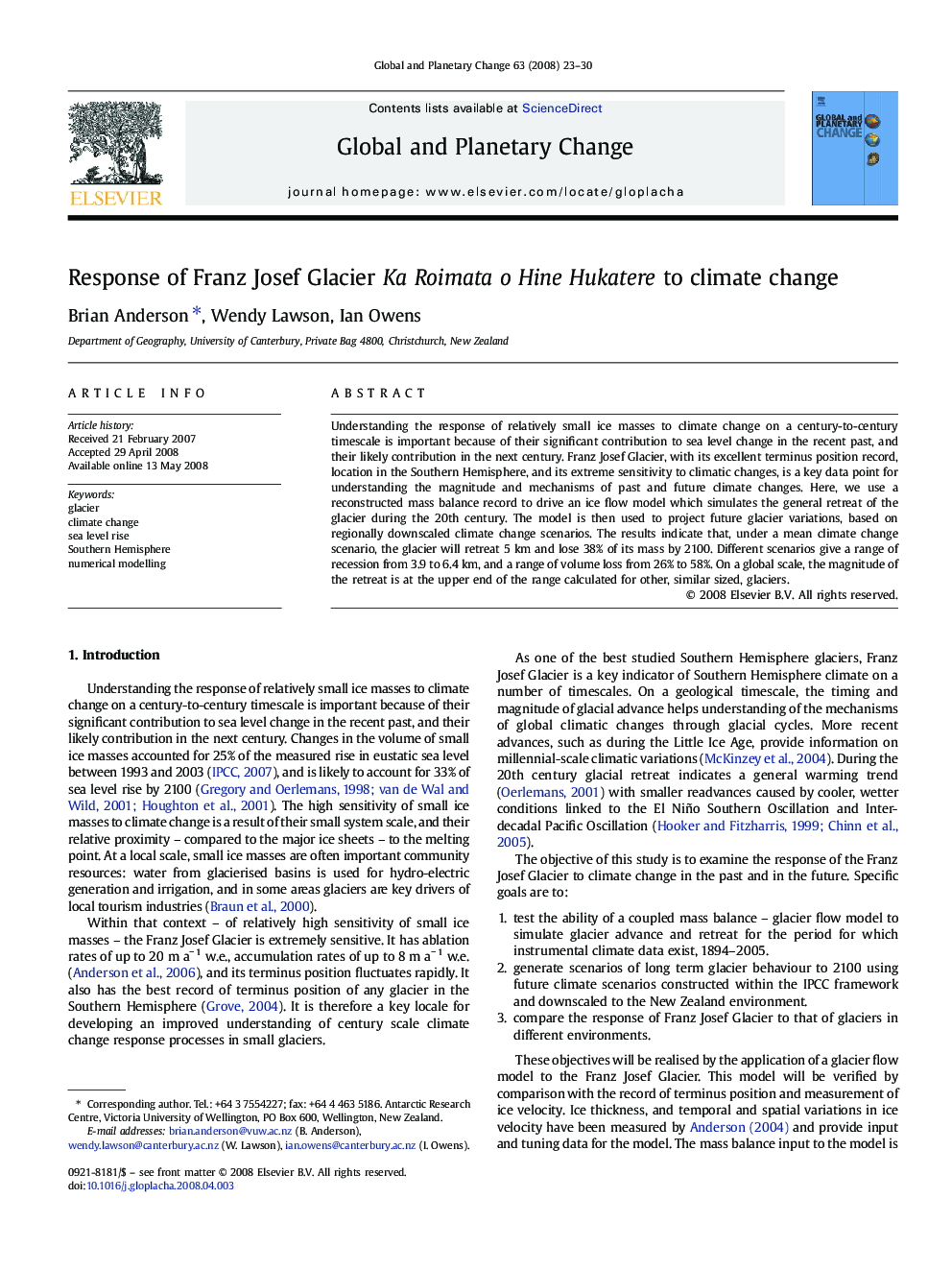| Article ID | Journal | Published Year | Pages | File Type |
|---|---|---|---|---|
| 4464234 | Global and Planetary Change | 2008 | 8 Pages |
Understanding the response of relatively small ice masses to climate change on a century-to-century timescale is important because of their significant contribution to sea level change in the recent past, and their likely contribution in the next century. Franz Josef Glacier, with its excellent terminus position record, location in the Southern Hemisphere, and its extreme sensitivity to climatic changes, is a key data point for understanding the magnitude and mechanisms of past and future climate changes. Here, we use a reconstructed mass balance record to drive an ice flow model which simulates the general retreat of the glacier during the 20th century. The model is then used to project future glacier variations, based on regionally downscaled climate change scenarios. The results indicate that, under a mean climate change scenario, the glacier will retreat 5 km and lose 38% of its mass by 2100. Different scenarios give a range of recession from 3.9 to 6.4 km, and a range of volume loss from 26% to 58%. On a global scale, the magnitude of the retreat is at the upper end of the range calculated for other, similar sized, glaciers.
